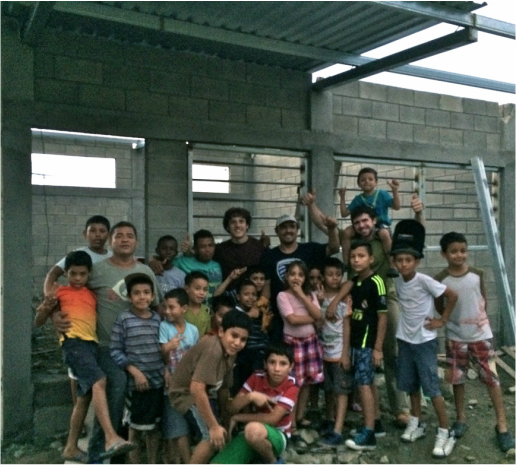Why Access to Education is Critical for Youth in San Pedro Sula, Honduras

For many Hondurans, extreme poverty is a daily reality. Honduras is the second poorest country in Central America and perhaps the least developed, so the government has very limited resources to allocate towards education. In fact, more money is spent by the government on foreign debt than education. The poor makeup the majority of the population, as 57% of Hondurans are rural laborers who mostly work to farm their own small plots of lands or work for others for miniscule wages. The average wage payment for a Honduran is $1.50 per day.
Because of this, children are often forced to drop-out of school at a young age and work to help financially support their family as education is only free in Honduras up to the 5th grade. As a result, the average extent of education for a Honduran is the 4th grade. Even prior to the 5th grade, many Honduran families cannot afford to pay for uniforms and supplies on a $1.50 per day income, making it virtually impossible for these children to attend school. Due to this, only 30% of all Honduran children attend school past the 6th grade and enter high school. In addition, almost 25% of children ages 5-12 do not attend school ever and over 90% of students end up repeating a grade in many areas of Honduras. The average time it takes a student to complete the first through sixth grades is 9.4 years, over 3 years longer than it should take as the number of dropouts increases as kids try to help support their families. One of the most severe problems in the Honduran educational system is the fact that education is only accessible to 86.5% of children, (due to the fact that many well-settled neighborhoods do not have schools within walking distance) leaving the rest with no means to receive an education and restricting them to very little opportunity for stable employment. Only 8% of all children enrolled in public school attend a college or university.
As a result, many Hondurans turn to crime and violence as a means to provide for their families. San Pedro Sula, Honduras is considered by many to be the most dangerous city on the planet for local residents. It has the highest murder rate in the world, standing at a staggering 169 murders per 100,000 people, as many are forced to turn to extremely powerful and dangerous gangs at young ages in order to feed their families. These profoundly violent groups convince young kids that they can provide them with a way out of poverty, that they can give them and their families a better life if they are willing to work for these gangs. Unfortunately, many mistakenly find this to be the best option to provide for their families and commit themselves to a life of violence without really understanding the repercussions. As you can imagine, it is rare for any of these young kids to even make it out alive in such an extreme situation. In other words, staying in school is critical to both their success and could potentially save their lives.
Because of this, children are often forced to drop-out of school at a young age and work to help financially support their family as education is only free in Honduras up to the 5th grade. As a result, the average extent of education for a Honduran is the 4th grade. Even prior to the 5th grade, many Honduran families cannot afford to pay for uniforms and supplies on a $1.50 per day income, making it virtually impossible for these children to attend school. Due to this, only 30% of all Honduran children attend school past the 6th grade and enter high school. In addition, almost 25% of children ages 5-12 do not attend school ever and over 90% of students end up repeating a grade in many areas of Honduras. The average time it takes a student to complete the first through sixth grades is 9.4 years, over 3 years longer than it should take as the number of dropouts increases as kids try to help support their families. One of the most severe problems in the Honduran educational system is the fact that education is only accessible to 86.5% of children, (due to the fact that many well-settled neighborhoods do not have schools within walking distance) leaving the rest with no means to receive an education and restricting them to very little opportunity for stable employment. Only 8% of all children enrolled in public school attend a college or university.
As a result, many Hondurans turn to crime and violence as a means to provide for their families. San Pedro Sula, Honduras is considered by many to be the most dangerous city on the planet for local residents. It has the highest murder rate in the world, standing at a staggering 169 murders per 100,000 people, as many are forced to turn to extremely powerful and dangerous gangs at young ages in order to feed their families. These profoundly violent groups convince young kids that they can provide them with a way out of poverty, that they can give them and their families a better life if they are willing to work for these gangs. Unfortunately, many mistakenly find this to be the best option to provide for their families and commit themselves to a life of violence without really understanding the repercussions. As you can imagine, it is rare for any of these young kids to even make it out alive in such an extreme situation. In other words, staying in school is critical to both their success and could potentially save their lives.
